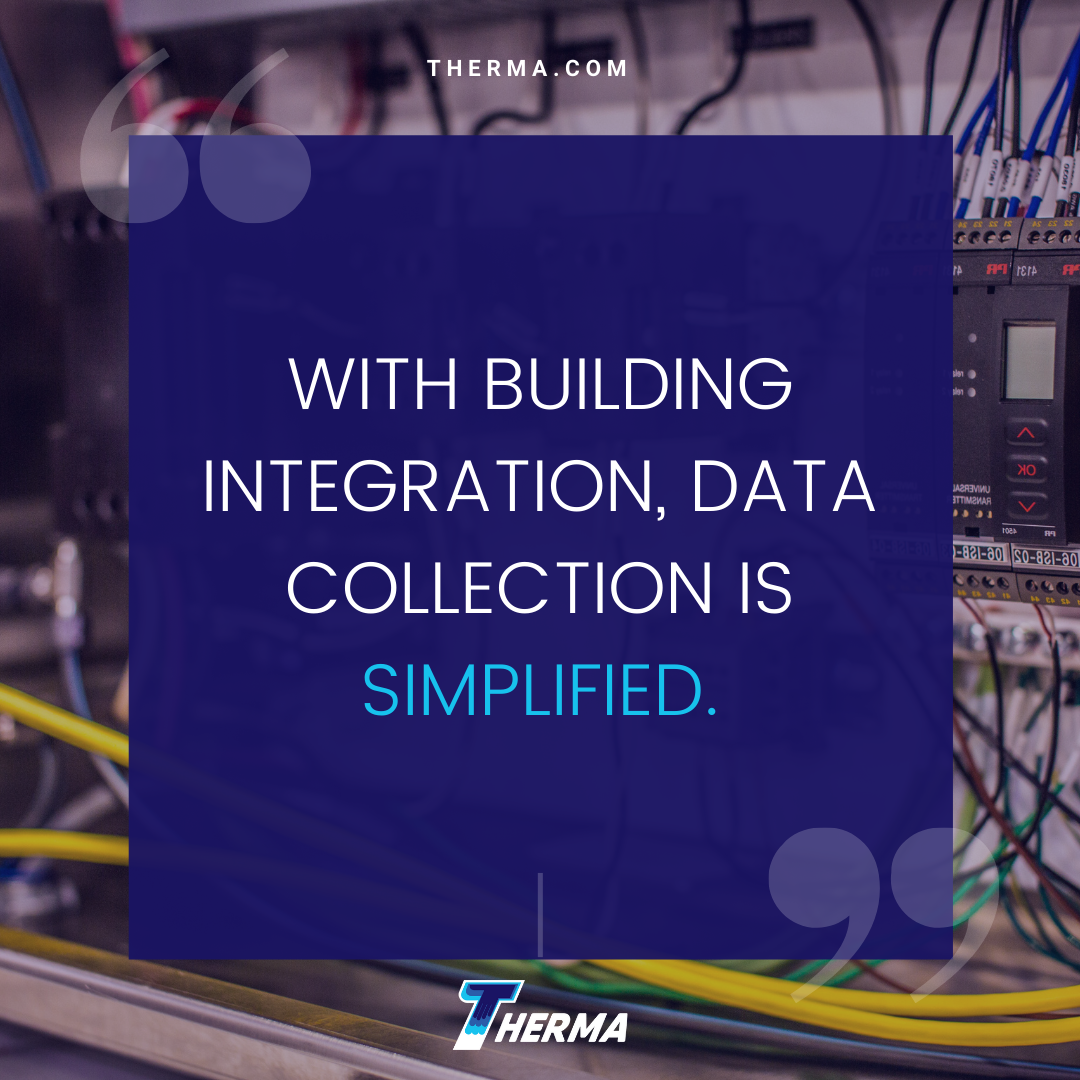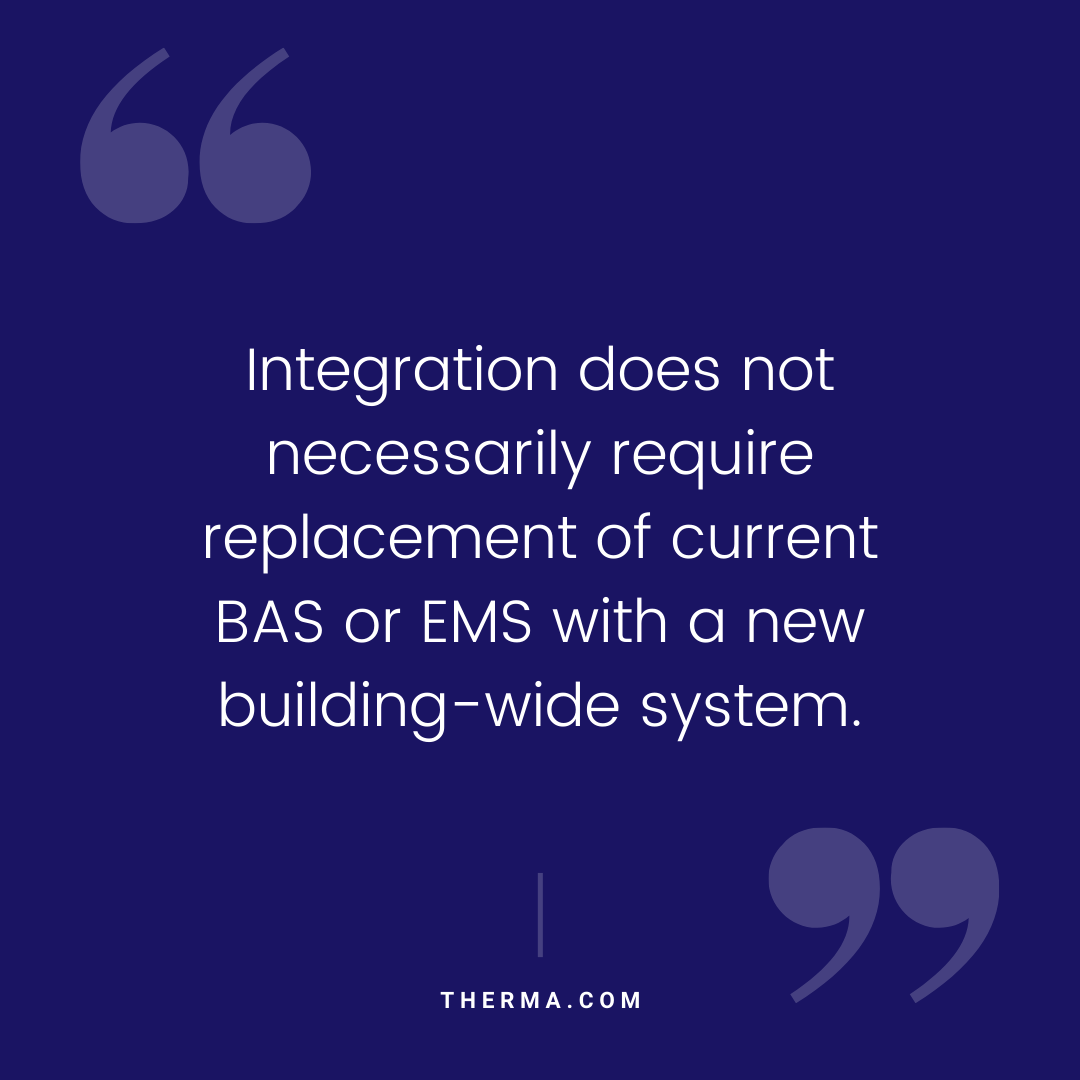Property managers and owners can streamline building systems and maximize efficiency and savings using HVAC optimization. By linking HVAC with other systems, controls are more effective. Optimization of an integrated building yields additional benefits for managers, owners, and occupants as compared to the optimization of individual subsystems.
HVAC Optimization: HVAC is Not an Independent System
Treating a building’s subsystems as separate units introduces waste from redundancy, circumvents possible savings and benefits, and can even create conflicts between them. HVAC, lighting, security, fire protection, etc. are interdependent.
Looking specifically at HVAC, there are multiple inputs from related systems that may be overlooked. Examples include:
- Lighting and any equipment that creates heat while running contributes to the heat load in that area. Issues with these subsystems can create inefficiencies in HVAC.
- Servers/computing require their own temperature handling to ensure equipment does not overheat.
- Fire protection is limited if smoke can travel through HVAC systems to other areas.
Without building-wide coordination, one system’s optimization may cascade into trouble for another, or additional savings may be overlooked.
Juggling Systems vs. Controlling Them
Building automation systems (BAS) and energy management systems (EMS) are commonly used by managers and owners to optimize individual subsystems such as HVAC or lighting. Generally speaking, a BAS is used for mechanical manipulation and controls, and an EMS focuses on metering equipment and monitoring energy use. Even though they perform different functions, the two types of systems complement each other. Coupling these building operations systems with the increased use of IoT devices opens the way for the integration of building operations systems.
IoT sensors and controls are designed to improve communication between equipment and users and offer a great way to begin the integration process. With building integration, data collection is simplified. Rather than maintaining redundant sensors feeding into each building operation system, data from a single IoT device can actuate multiple controls. For instance, occupancy sensors can be used to adjust lighting and increase ventilation in an area.
Building integration provides a coordinated response between complex systems to reduce negative impacts and improve communication between devices and controllers. Data from equipment can be used for benchmarking energy and efficiency of equipment as well as controlling equipment for optimization. Rather than independently focusing on each subsystem, integrated data and controls can reduce redundant data collection and provide more comprehensive monitoring and reporting for long-term or life cycle planning.
Step Forward with System Integration
Integration does not necessarily require replacement of current BAS or EMS with a new building-wide system. Integrated automation systems and software platforms are available to coordinate input from already installed components. Requirements to consider when undertaking an integration project are:
- How to manage and store data
- Hardware options and limitations
- Cybersecurity measures
- Software options to coordinate the various building systems.
However, integration requires more than a common control interface and robust hardware. Control set points and algorithms are based on heuristics and assumptions, which may need to be reviewed. For instance, the additional data and energy conservation initiatives common today may lead to oversized HVAC systems. The original designers and technicians may have used rules of thumb that are no longer relevant based on the data collected, or improvements to a building can reduce the load requirement. Moves to integrate sensors and controls across many building operations systems should include a re-evaluation of equipment based on historical data.
Property managers and owners can step up their game by integrating building systems. Coordinated data and controls promote resource conservation and an optimization cascade that saves money and increases productivity. Automation experts can help owners and managers determine the best integration method for their building.









